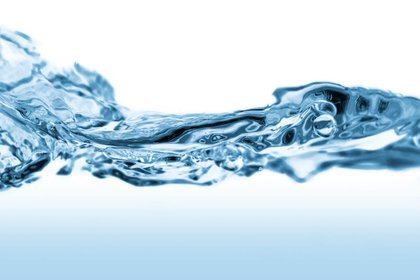3 Ways to Maximize the Benefits of a Variable-Speed Pump

Wednesday, January 16, 2019
Variable-speed pumps have set the new industry standard for efficiency, and many customers already know the energy-saving potential of these
products. What they don’t know is how to calculate that savings and get the most out of the pump they purchase.
In order to maximize the energy savings from each pump, you’ll need to consider other variables. For this reason, Michael Orr, director of education at The Foundation for Pool and Spa Industry Education (FPSIE), recommends starting with an energy audit, especially when replacing an older pump with a variable-speed model.
The Foundation for Pool and Spa Industry Education (FPSIE), recommends starting with an energy audit, especially when replacing an older pump with a variable-speed model.
Some are slightly more efficient than others, but these days, there’s generally not a huge difference between pumps. To find the most efficient, compare one brand’s Energy Star number to another, Orr advises.
When it comes to installing and optimizing a variable-speed pump, professionals are becoming more proficient not only at using tools such as electrical meters and gauges to measure performance, but they also are mastering the information gathered through algorithms in online calculators, says Phil Gelhaus, FPSIE board chairman.
Once you’ve determined the right variable-speed pump for your customer, try these three equipment modifications to help the pump produce the best results.
Proper programming
Key to getting the most out of a pump is to program it correctly. In addition to following the manufacturer’s instructions to the letter, you’ll want to take your customer’s unique circumstances into account.
“You can tune a pump to a particular swimming pool,” Orr says.
Ask the customer what utility provider they use, then check the energy provider’s website for peak demand hours. Programming the pump around these hours will save that customer money on their utility bill.
“The key thing for installers is [not] running pumps [during] the utility company’s higher tier billing hours,” Gelhaus says.
Whether the pump is newly installed or existing, it is worthwhile to make sure it is programmed for meet the pool’s needs.
Pipe size
The hydraulic detail is an important factor in getting the most out of a variable-speed pump.
For example, says Orr, “if you use old tight-radius 90s in PVC plumbing, [the energy efficiency] will get worse, but if you use the new long-radius sweep 90s, it’ll get better.”
To learn how efficient the hydraulics system is, Orr recommends consulting a flowmeter and RMS power meter, then using this formula: number of gallons pumped in 1 hour divided by the watts being used. You can take this measurement before and after you replace equipment to see the difference in energy usage.
Homeowners with pools under 40,000 gallons should have at least 2-inch piping to get the best out of a variable-speed pump, Orr says.
Better flow
The hydraulic detail is an important factor in getting the most out of a variable-speed pump.
For example, says Orr, “if you use old tight-radius 90s in PVC plumbing, [the energy efficiency] will get worse, but if you use the new long-radius sweep 90s, it’ll get better.”
To learn how efficient the hydraulics system is, Orr recommends consulting a flowmeter and RMS power meter, then using this formula: number of gallons pumped in 1 hour divided by the watts being used. You can take this measurement before and after you replace equipment to see the difference in energy usage.
Homeowners with pools under 40,000 gallons should have at least 2-inch piping to get the best out of a variable-speed pump, Orr says.
Better FlowUpgrading the jets and filter can ease the burden on a variable-speed pump, adding another level to its efficiency.
New, high-tech jets on the marketplace, such as the V-fitting and eyeball jet, help accelerate the water. This, in turn, makes the variable-speed pump more efficient. “We want to accelerate it down at a 45-degree angle [because] this aids in the filtration process,” says Orr.
FPSIE also recommends mega-cartridge filters, saying they improve efficiency by eliminating the need to backwash.
For those outside of California looking to improve energy efficiency, Orr and Gelhaus suggest following California’s Tile 24 code when updating equipment.